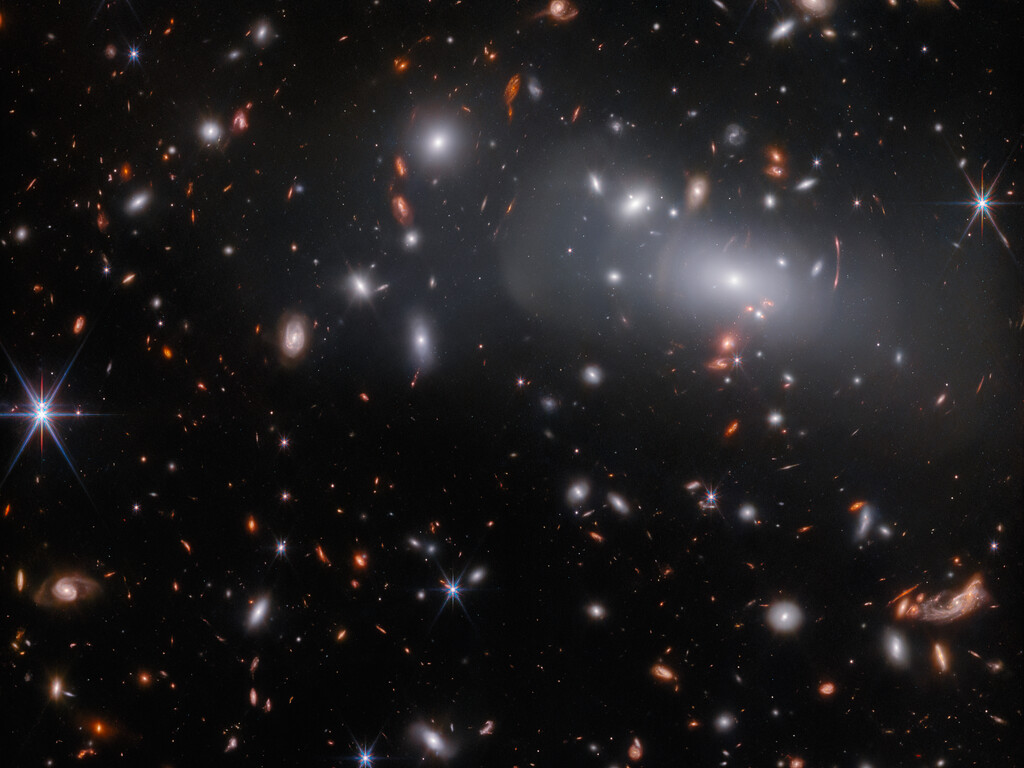Webb telescope observes massive galaxy cluster 3.2 billion light-years from Earth

The NASA/ESA/CSA James Webb Space Telescope continues to beam back breathtaking images of the cosmos. This particular observation contains three different images of the same supernova-hosting galaxy which is part of RX J2129 - a massive galaxy cluster located around 3.2 billion light-years from Earth in the constellation Aquarius.
The three images are a result of an effect called gravitational lensing that occurs when the gravity of a massive object, like a galaxy cluster, bends the path of light from a more distant object behind it, almost like a vast lens, as can be seen by the concentric arcs of light in the upper right of this Webb image.
The gravitational lens has created three lensed images of the background galaxy.
- The light that took the longest path gives us the oldest image of the galaxy, in which the supernova is still visible. The supernova in this galaxy was discovered using observations from the NASA/ESA Hubble Space Telescope
- The second image is of the galaxy as it appears roughly 320 days later than the first one, and
- The last image is roughly 1000 days after the first.
"The almost uniform luminosity of a Type Ia supernova could also allow astronomers to understand how strongly the galaxy cluster RX J2129 is magnifying background objects, and therefore how massive the galaxy cluster is. As well as distorting the images of background objects, gravitational lenses can cause distant objects to appear much brighter than they would otherwise. If the gravitational lens magnifies something with a known brightness, such as a Type Ia supernova, then astronomers can use this to measure the ‘prescription’ of the gravitational lens," ESA explained in a post.
This observation, captured by Webb's Near-InfraRed Camera or NIRCam, was aimed at measuring the brightness of the lensed supernova.
2/ A gravitational lens can occur when a massive celestial body causes a sufficient curvature of spacetime to bend the path of light travelling past or through it, almost like a vast lens 🔎 Here, the lens is the galaxy cluster RX J2129 pic.twitter.com/EVosxASWuJ
— ESA Webb Telescope (@ESA_Webb) February 28, 2023










